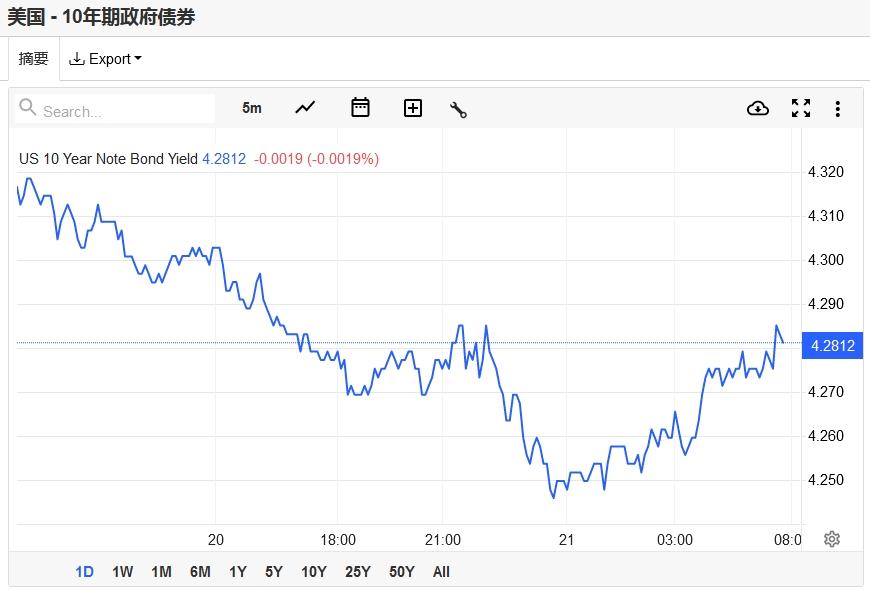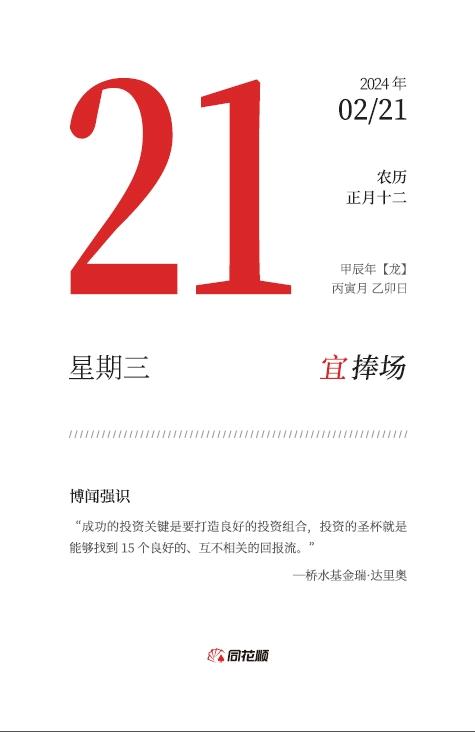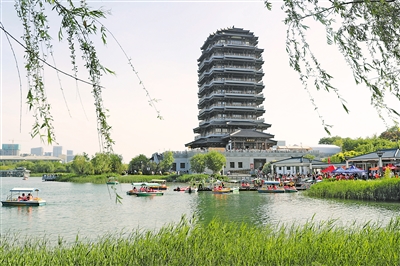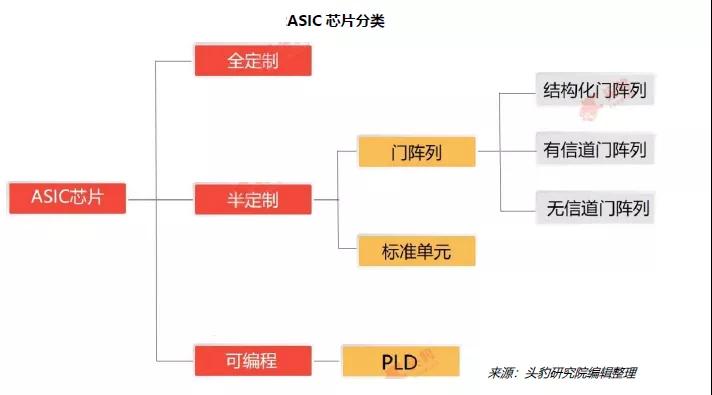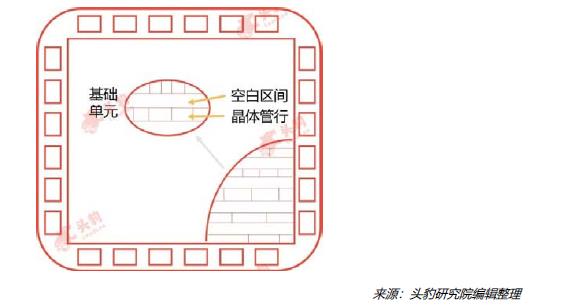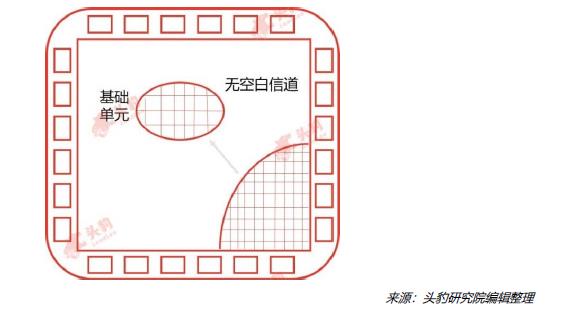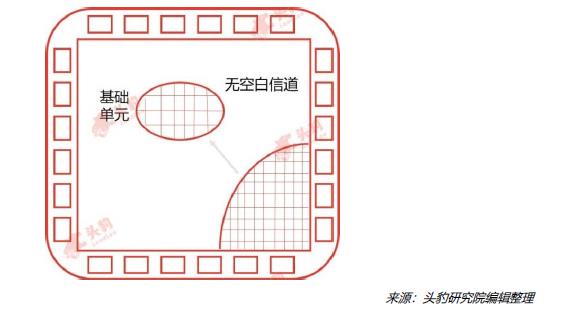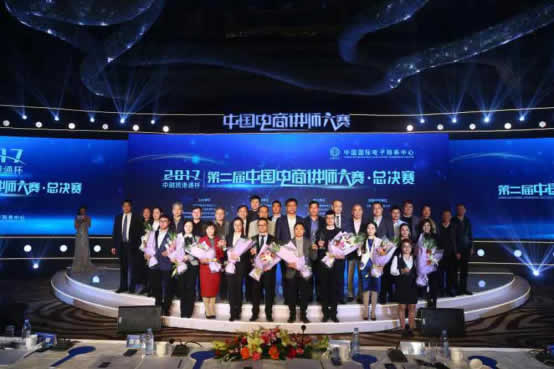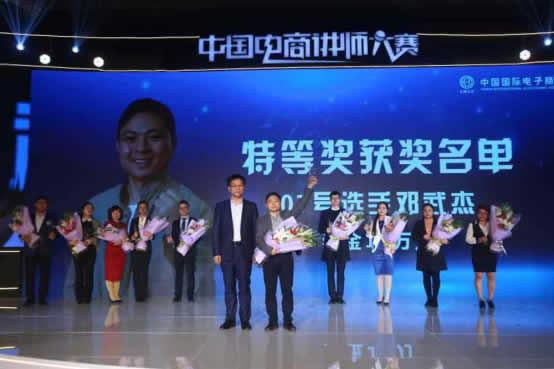Article 20 The term of protection of an author’s right of authorship, right of revision and right of protecting the integrity of a work is unlimited.
[Interpretation] This article provides for the duration of protection of the author’s right of signature, right of revision and right to protect the integrity of the work.
The term of protection of copyright refers to the effective period during which the copyright owner enjoys the exclusive right to the work, that is, the period stipulated by law to protect the copyright of the copyright owner. During the period of copyright protection, the author or other citizens, legal persons or other organizations who enjoy copyright according to law enjoy copyright in the work, and others need to obtain permission from the copyright owner according to law and pay corresponding remuneration for using the work. When the term of copyright protection expires, the copyright owner will lose his copyright, and the work will enter the public domain. People can use the work without the permission of the copyright owner and can use the work for free. Thus, the term of protection of copyright means that within a certain period stipulated by law, copyright is protected according to law; Beyond this statutory time limit, copyright will no longer be protected by law. It is one of the ways to restrict the copyright enjoyed by copyright owners.
The right of authorship is the author’s right to show his identity and sign his name on the work, which is the author’s most basic personal right; The right to modify is the right of the author to modify or authorize others to modify his work before or after its publication; The right to protect the integrity of works is the author’s right to protect his works from distortion and tampering, which is an important right in the author’s personal rights. The copyright law stipulates that the protection period of these rights of the author is unlimited, which shows that the author’s right of signature, modification and protection of the integrity of the work will always be protected by law. During the life of the author (citizen) or during the existence of the legal person or other organization, if the author forcibly signs the work, deletes the author’s name as non-author, plagiarizes the work, modifies or abridges the work without the author’s consent, and distorts and falsifies the work contrary to the author’s original intention, destroys the true meaning of the work and damages the author’s reputation, the author may ask the infringer to stop the infringement, eliminate the influence and publicly apologize according to law. After the death of the author’s citizen, the author’s right of signature, modification and protection of the integrity of the work shall be protected by his successor or legatee; After the termination or change of the legal person or other organization as the author, these rights shall be protected by the legal person or other organization that bears its rights and obligations. If the author has no heir, legatee or legal person or other organization that bears his rights and obligations,The state will protect its right of authorship, modification and integrity of works from infringement.
The author’s right to sign, modify and protect the integrity of the work belongs to the personal rights in copyright. Because these personal rights of the author in copyright can only be enjoyed by the author himself in principle (even after the death of a citizen as an author, his personal rights can still be reflected through the existence of his works), and can exist independently of property rights; Because these rights are directly related to the author’s morality, intelligence, reputation and honor, and involve the ownership of the work, and whether the work truly reflects the author’s original intention, the protection of these rights of the author is not only a problem before the author’s death, but also a permanent problem. It can’t be imagined that although Cao Xueqin, the author of the classic Dream of Red Mansions, has already passed away, this work has already entered the public domain in the sense of property, so we can change the original author’s signature or change the specific historical environment involved in the work. If so, we can’t guarantee that works, especially excellent works, will be better disseminated and utilized from generation to generation. In addition, if the author’s right of signature, modification and protection of the integrity of the work are not given permanent legal protection, then, after the expiration of the protection period, if someone changes the author’s signature or the content of the work, although it can be condemned by public opinion, but because this behavior is no longer in the category of copyright infringement,Therefore, it is impossible to effectively stop and sanction such acts as copyright infringement through legal channels.
This provision of the Copyright Law tells us that when the protection period of the author’s property rights and other rights ends, people can freely use their works by copying, distributing, renting, exhibiting, performing, screening, broadcasting, filming, adaptation, translation and assembly, but they have no right to change the author’s signature and the content of the works, otherwise they will be investigated for legal responsibility for copyright infringement, which can effectively guarantee the original dissemination of the works without being infringed.
Article 21 The term of protection of a citizen’s right of publication and the rights stipulated in Items (5) to (17) of Paragraph 1 of Article 10 of this Law shall be the author’s life and fifty years after his death, ending on December 31 of the fiftieth year after his death; If it is a cooperative work, it ends on December 31st of the fiftieth year after the death of the last deceased author.
The term of protection for the works of legal persons or other organizations, as well as the works in which the copyright (except the right of authorship) is enjoyed by legal persons or other organizations, and the rights specified in Items (5) to (17) of Paragraph 1 of Article 10 of this Law shall be fifty years, ending on December 31st of the fiftieth year after the first publication of the works. However, if the works have not been published within fifty years after the completion of the creation, this Law will no longer protect them.
For cinematographic works, works created by methods similar to cinematography and photographic works, the term of protection of the right of publication and the rights specified in Items (5) to (17) of Paragraph 1 of Article 10 of this Law is fifty years, ending on December 31st of the fiftieth year after the first publication of the works. However, if the works are not published within fifty years after the completion of the creation, this Law will no longer protect them.
[Interpretation] This article provides for the protection period of the author’s right of publication and property rights.
The protection and restriction of copyright are determined by two factors: fully and properly protecting the legitimate rights and interests of copyright owners, encouraging creation, and facilitating the dissemination of works and promoting the development and prosperity of culture and science. On the one hand, copyright should be protected, so that copyright owners, especially authors, can enjoy personal rights and get economic benefits from the dissemination and use of their works. When the author’s personal rights and property rights are protected by law, their creative enthusiasm will be fully encouraged and brought into full play, and more and better works will be created for social use. After the death of a citizen who is an author, the property right in his copyright can be inherited by his successor according to law or transferred by bequest, and the author’s successor or legatee can enjoy the property right of the work just like the author. On the other hand, with the development and progress of society and the cultural needs of the public, works, as a spiritual product, need to be more widely spread and used by the society in a timely manner, and the property rights of authors and other copyright owners cannot last forever. Therefore, it is necessary to restrict the copyright of the copyright owner. If there is no restriction on the protection of copyright and there is no time constraint on the exercise of copyright, then the protection of copyright will conflict with the interests of the public.It will become an obstacle to the development of culture, science and technology, education and other undertakings.
In order to ensure the normal use of works, especially excellent works, and make them widely and timely spread and exchange, it is necessary and appropriate to restrict the exercise of copyright owners’ rights while protecting their rights. On this issue, China’s copyright law stipulates a "fair use" system in which a work can be used under certain conditions without permission and without payment to the copyright owner; And the "legal permission" system that you can use a work under legal conditions without the permission of the copyright owner and only pay the remuneration to the copyright owner after use. In addition, the protection period of copyright is stipulated in order to give necessary restrictions on the exercise of copyright owners’ rights in time. Once the term of protection expires, the copyright enjoyed by the copyright owner will be extinguished, and the work will enter the public domain and become the common wealth of society. Anyone can use the work without the permission of the copyright owner and without paying remuneration to him.
Article 21 of the Copyright Law stipulates the time limit for the protection of copyright owners’ rights of publication, property rights (reproduction, distribution, lease, exhibition, performance, projection, broadcasting, information network dissemination, filming, adaptation, translation and assembly, etc.), and it depends on different copyright subjects (citizens and legal persons, other organizations) and different types of works (general works and films and photographic works) Within the prescribed period of rights protection, the copyright owner can fully exercise his rights in accordance with the law, decide whether the work should be published and in what form, decide how to use the work himself and whether to allow others to use the work, and get corresponding remuneration when others use his work. However, once the term of protection of rights has expired, the copyright law will no longer protect the copyright owner’s right to publish and property, and the work will enter the public domain, and people can use the work without the permission of the copyright owner and without paying remuneration. The significance of this provision lies in promoting the works to be more widely spread in society, enriching the public’s cultural life and promoting the development of science and technology on the premise of giving proper protection to the property rights in copyright and making the copyright owner obtain reasonable economic income.
It is worth mentioning that the right of publication, the right of signature, the right of revision and the right to protect the integrity of works belong to the author’s personal rights. Why should the copyright law limit the protection of the right of publication? This is because, compared with several other personal rights, the right of publication has its special features. First of all, the publication of works will bring economic benefits to the author, which makes the right of publication a personal right directly related to property rights; Secondly, after the author’s death, termination or change, this right can be managed and exercised by his heirs, legatees or units that bear his rights and obligations, and economic benefits can be obtained based on the publication of the work. Therefore, on the issue of the duration of protection of the right of publication, measures similar to property rights should be taken. In addition, in order to meet the spiritual needs of the public and promote the early publication of works, it is also necessary to limit the protection of the right of publication in time.
I. Protection Period of Citizens’ Works
For the protection period of general works created by natural persons, all countries in the world follow the principle of "the author’s lifetime plus several years after his death". Only in different countries, there are different regulations on the protection period of the author’s rights after death. Some countries stipulate 25 years and 30 years; Some countries stipulate 60, 70 or 80 years; More countries, such as Britain, France, Italy, Sweden, Switzerland, Denmark, Japan, the Philippines, Singapore, Egypt, the United States, Canada, Australia and other countries stipulate 50 years.
The first paragraph of Article 21 of China’s Copyright Law stipulates that the protection period of the publication right and property right of works created by citizens, such as words, dictation, music, drama, folk art, dance and art, is "the author’s life and fifty years after his death", which is the same as the protection period stipulated by most countries in the world.
According to the provisions of the copyright law, the author’s right to publish and property rights are protected by law during the protection period of 50 years before his death and after his death. No one may publish a work against the will of the copyright owner; Unless otherwise specified by law, anyone who uses a work by copying, distributing, renting, exhibiting, performing, playing, filming or adapting, translating or assembling must obtain the permission of the copyright owner and pay remuneration to him. Otherwise, the author or the author’s heirs and legatees have the right to require them to bear corresponding legal responsibilities in accordance with the law.
Why does China’s copyright law stipulate that the protection period of the author’s rights after death is 50 years, not shorter or longer? To determine how long the protection period is appropriate, we should not only consider the development level of copyright protection in China and the social demand for works, but also consider the needs of opening up and international cultural and scientific exchanges, as well as international practices. According to relevant statistics, at present, most countries in the world stipulate that the post-death protection period of the author’s property rights is 50 years. If China’s copyright law makes such a provision, it can be consistent with most countries and achieve equivalence. In addition, the Berne Convention also stipulates: "The protection period given by this Convention shall be within the author’s lifetime and fifty years after his death." According to the principle of minimum protection of international copyright protection, the protection of works of other States parties by States parties cannot be lower than the standard of the convention. On the issue of protection period, it needs to be longer than or equal to the period stipulated in the convention.
The term of protection of the rights of ordinary works created by citizens is generally stipulated in various countries as the author’s lifetime plus several years after his death. However, when the post-death protection period of the author’s rights begins to be calculated, the provisions of various countries are not consistent. To sum up, there are mainly the following methods: counting from the beginning of the year of the author’s death; From the end of the year of the author’s death (December 31st); From the beginning of the second year of the author’s death (L 1); However, in some countries, in order to avoid shortening or extending the protection period due to the error in time calculation, the calculation method is adopted from the time when the specific event occurs (the date of the author’s death).
Regarding the calculation of the protection period after the death of the author, China’s copyright law only stipulates the deadline, that is, "as of December 31 of the fiftieth year after the death of the author", and does not stipulate the starting date. The calculation method of the deadline is "December 31st of the fiftieth year after the death of the author", and the year after the death is the year after the death of the author, counting from this year to December 31st of the fiftieth year. For example, when a composer died in May 1990, the post-death protection period for his rights should be 1991 as the first year after his death and expire on December 31, 2040.
II. Determination of the term of protection of cooperative works
A cooperative work is a work created jointly by two or more people. Under normal circumstances, its copyright is shared by the co-authors. In view of the differences in the age and life span of co-authors, the copyright law stipulates that the term of protection of the publishing right and property right of the creators of such works shall end on December 31, the fiftieth year after the death of the last deceased author. That is to say, for cooperative works, the protection period should be determined based on the last dead author. This practice is also a common practice in the world. Many countries in the world determine the term of protection of cooperative works based on the lifetime of the last deceased co-author, plus several years after his death. However, some countries stipulate that the protection period of the author of a cooperative work after death starts from the death of one of the co-authors (that is, the first deceased author). According to the Berne Convention, the protection period after the death of a co-author shall be counted from the death of the last co-author.
Paragraph 2 of Article 13 of China’s Copyright Law stipulates: "If a cooperative work can be used separately, the authors can enjoy the copyright separately for the parts they created." According to this regulation, when a co-author exercises the copyright of a part of a cooperative work that can be used separately, the general provisions on the term of protection of the cooperative work do not apply, but should be calculated by the method of the author’s lifetime and 50 years after his death.
Three, about the legal person or other organization’s work, copyright (except the right of signature) by the unit to enjoy the protection period of the work.
For the works created by legal persons or other organizations and the copyright (except the right of signature), the copyright law stipulates that the protection period of the publishing right and property right enjoyed by legal persons or other organizations is 50 years, ending on December 31 of the fiftieth year after the first publication of the works. At the same time, it also stipulates that if such works are not published within 50 years after their creation, the copyright law will no longer protect them.
As can be seen from the provisions of the Copyright Law, the term of protection for the works of legal persons or other organizations, as well as the works of posts whose copyright (except the right of signature) is enjoyed by legal persons or other organizations, is different from that of works created by citizens. The reason is that legal persons and other organizations are not natural persons, and their duration can be short or long, and there are no rules to follow. Naturally, the general protection period based on the life of natural persons cannot be applied, and the practice of duration plus termination and how many years after change cannot be adopted. It is only reasonable and feasible to determine the protection period of such works by adopting the method of several years after their first publication.
Four, about the protection period of movies and works created by methods similar to making movies.
Because movies and works created by methods similar to filming have the characteristics of being re-created on the basis of other people’s works or original works, the protection period given to such works in many countries is shorter than that of works created by natural persons.
According to the provisions of China’s copyright law, the protection period of publication right and property right of such works is 50 years, ending on December 31 of the fiftieth year after the first publication of the works. However, if the works are not published within 50 years after the completion of creation, the copyright law will no longer protect them.
In terms of the calculation method of the protection period of films and works created by methods similar to filming, China is basically the same as other countries that attribute the copyright of such works to producers, that is, it is calculated by several years after the first publication (or public screening). It is just that China’s protection period for such works is among the longer in these countries, which means that China’s protection for copyright owners of films and works created by methods similar to filming is more adequate.
Article 15, paragraph 2, of the Copyright Law stipulates: "Authors of works that can be used independently, such as scripts and music, in film works and works created by methods similar to filming, have the right to exercise their copyright alone." Therefore, for works that can be used independently, such as scripts and music, in film works and works created by methods similar to filming, if the author is a citizen, the term of protection should be calculated by the method of "the author’s lifetime and fifty years after his death". For example, the TV series A Dream of Red Mansions is protected for 50 years after its release, while the theme song "Woningmei" is protected for 50 years after the author’s lifetime and death.
V. Protection Period of Photographic Works
In the process of creation, photographic works depend more on equipment than other types of works. Therefore, according to the particularity of photographic works, the Copyright Law stipulates that the protection period of publishing rights and property rights of photographic works is 50 years, ending on December 31, the fiftieth year after the first publication of the works. At the same time, it is stipulated that if the works are not published within 50 years after the completion of creation, this law will no longer protect them. This provision shows that the time limit for citizens to enjoy the right of publication and property rights for photographic works is shorter than that for ordinary works, which is only 50 years after the publication of the works, rather than "the author’s life and 50 years after his death". This provision is consistent with the international practice. For example, the Berne Convention stipulates that the protection period of photographic works should not be shorter than 25 years after the completion of the works. This is obviously lower than the standard that the protection period of the general works of citizens stipulated in the convention should not be shorter than the author’s lifetime and 50 years after his death. It shows that the convention allows its member countries to protect photographic works for a shorter period than their own for other works.
VI. Determination of the Protection Period of commissioned works
Commissioned works is a work created according to the entrustment contract signed by the client and the trustee. With regard to the ownership of the copyright of a commissioned work, Article 17 of the Copyright Law stipulates that the client and the trustee shall agree through a contract. If the contract is not clearly stipulated or concluded, the copyright belongs to the trustee. As for the subject of copyright, for the client, it may be a legal person or other organization or a citizen; For the trustee, it may also be a citizen, a legal person or other organization. In view of the fact that commissioned works allows both parties to determine the ownership of copyright by contract, and the uncertainty between the client and the trustee on the issues of citizens, legal persons and other organizations, the application of the protection period for such works should be determined according to whether the works belong to the client or the trustee, and whether the client or the trustee is a legal person, other organizations or citizens. If the copyright belongs to the client, and the client is a legal person or other organization, the term of protection for the work of the legal person or other organization shall apply, that is, 50 years after the first publication of the work; If the client is a citizen, the term of protection of the citizen’s work should be used as the calculation method, that is, "the author’s life and fifty years after his death." If the copyright is enjoyed by the trustee, the relevant rights protection period should also be applied according to the different situations of whether the copyright subject is a legal person or other organization or a citizen.Section 4 Limitation of Rights There are two articles in this section. It is a restrictive provision for copyright owners to exercise copyright.
Because the material that the author needs for creation comes from people’s social life, the author can’t create without the culture created by predecessors and the knowledge and experience of others. Therefore, while enjoying the copyright, the author should do his duty to the society and the public. Not only that, because the copyright enjoyed by the copyright owner is used in many ways and involves a wide range, if others use the work with the consent of the copyright owner and pay remuneration, then it is not conducive to the development of science and culture. Therefore, the protection of copyright enjoyed by copyright owners should not be absolute and unlimited. The restrictions on copyright generally include: (1) Fair use. That is, under certain circumstances, you can use a work without the consent of the copyright owner and pay him no remuneration. (2) legal permission. That is, the use of a work under the conditions prescribed by law can be done without the consent of the copyright owner, but the copyright owner must be paid.
The copyright laws of most foreign countries clearly stipulate the restrictions on copyright. International conventions also stipulate and allow States parties to restrict the exercise of copyright by copyright owners in their domestic laws in some cases. As stipulated in Article 9 of the Berne Convention for the Protection of Literary and Artistic Works, the authors of literary and artistic works protected by this Convention have the exclusive right to authorize the reproduction of these works in any way and in any form. The laws of the member countries of the Union may allow the reproduction of the above-mentioned works under certain special circumstances, as long as such reproduction does not damage the normal use of the works and does not infringe on the legitimate interests of the authors without reason. Article 13 of the Agreement on Trade-Related Aspects of Intellectual Property Rights stipulates that all members should limit the restrictions or exceptions of exclusive rights to a certain special case, which should not conflict with the normal exploitation of works and should not unreasonably harm the legitimate interests of right holders.
According to the provisions of international conventions, especially to meet the needs of China’s entry into WTO, the amendments to the Copyright Law have made necessary amendments to the content provisions of the Copyright Law enacted in 1990, and made provisions conducive to the dissemination of works and the development and prosperity of economy, science and culture on the premise of fully protecting the rights and interests of copyright owners.
Article 22 A work may be used without permission or remuneration from the copyright owner under the following circumstances, but the name of the author and the name of the work shall be indicated, and other rights enjoyed by the copyright owner according to this Law shall not be infringed:
(1) Using published works of others for personal study, research or appreciation;
(2) appropriately quoting published works of others in a work for the purpose of introducing and commenting on a work or explaining a problem;
(3) Inevitably reproducing or quoting published works in newspapers, periodicals, radio stations, television stations and other media in order to report current news;
(4) Newspapers, periodicals, radio stations, television stations and other media publish or broadcast current articles on political, economic and religious issues that have been published by other newspapers, periodicals, radio stations, television stations and other media, unless the author declares that publication and broadcasting are not allowed;
(5) Newspapers, periodicals, radio stations, television stations and other media publish or broadcast speeches delivered at public meetings, unless the author declares that publication and broadcasting are not allowed;
(6) Translating or reproducing a few published works for classroom teaching or scientific research in schools for the use of teaching or scientific researchers, but not publishing them;
(7) State organs use published works within a reasonable scope for performing official duties;
(eight) libraries, archives, memorial halls, museums, art galleries, etc., in order to display or save the version, copy the works collected by the library;
(9) Performing a published work for free, without charging fees to the public or paying remuneration to the performer;
(10) Copying, painting, photographing and video recording works of art set up or displayed in outdoor public places;
(eleven) the China citizens, legal persons or other organizations have published works written in Chinese into minority languages and published in China;
(twelve) the published works are published in Braille.
The provisions of the preceding paragraph shall apply to restrictions on the rights of publishers, performers, producers of audio and video recordings, radio stations and television stations.
[Interpretation] This article is about the fair use of copyright.
The original copyright law also made restrictions on the exercise of copyright by copyright owners in Article 22, and this revision has made some changes on the basis of the original provisions. The restriction of rights stipulated in this article refers to the use of a work under certain circumstances, which can be used reasonably without the consent of the copyright owner and without payment to him.
The copyright laws of all countries have provisions on fair use. For example, in Article 107 of the Copyright Law of the United States, it is stipulated that the factors to be considered in determining whether the use of a work is reasonable under any specific circumstances should include: (1) it depends on the purpose of the use, that is, whether it is used for commercial purposes; (2) Depending on the nature of copyrighted works, different types of works have different forms of copyright utilization, and the boundaries of rationality are also different. For example, just copying a copyrighted article may be regarded as fair use, and rebuilding a building according to other people’s original buildings cannot be regarded as fair use; (3) It depends on whether the proportion of the used part to the whole work is appropriate, and improper proportion cannot be regarded as reasonable; (4) It depends on whether the relevant use behavior has a significant adverse impact on the potential market value of the work. If there is such an impact, it cannot be considered reasonable. Another example is Article 65 of the Copyright Law in Taiwan Province, China. The criteria are: first, the purpose and nature of the use, including whether it is for commercial purposes or non-profit educational purposes; The second is the nature of crops; Third, the proportion of the utilized part in all the crops; The fourth is the influence of the results on the potential market and present value of the works.
According to the provisions of this article, the use of other people’s works is fair use under the following circumstances:
1. Using published works of others for personal study, research or appreciation.
In daily life, there are many situations in which individuals use other people’s published works, for example, translating other people’s works to improve their foreign language level. Copying other people’s calligraphy and painting in order to cultivate their own skills. Singing and playing other people’s music works for self-entertainment. Transcribe audio and video tapes to enrich their cultural life. Because it is very common for individuals to use other people’s works, and the scope of using other people’s works is quite extensive, it is impossible and unreasonable to require everyone to obtain the consent of the copyright owner and pay remuneration every time they use other people’s works. Because, first, personal use has to be paid, which is difficult to implement; Second, personal use requires the permission of the copyright owner, so it will be difficult for the work to be used and disseminated, and the creative activity itself will lose its meaning. Therefore, the copyright laws of many countries include individual use of published works of others in the scope of fair use under certain circumstances. For example, Article 68 of the Italian Copyright Law stipulates that readers can copy a single work or part of it for personal use by hand-copying or other means that are not suitable for circulation or public dissemination. Article 493 of the Russian Civil Code stipulates that the published works of others can be copied or used in other ways to meet personal needs without the author’s consent and without paying the author. Article 30 of Japan’s Copyright Law stipulates that for the works that are the subject of copyright,In order to be used by individuals or families and in a limited range of the same kind, users can copy it. Article 29 (3) of "Copyright Law" in Taiwan Province, China stipulates that copying other people’s works for academic research, exclusively for their own users, shall not be regarded as infringement of copyright if the source of the original works is indicated. For personal use, you can freely use other people’s works without the consent of the copyright owner. Do not pay remuneration, and do not indicate the name of the author, the name of the work or the source.
China’s copyright law is no exception. It is stipulated in this article that individuals can study, study or enjoy the use of published works of others without the consent of the copyright owner and without paying remuneration to him. To meet this requirement, two conditions must be met: first, the purpose of using a work is for personal study, research or appreciation, and it cannot be used for publication or commercial performance, making and distributing audio and video tapes, playing them on radio and television stations, exhibiting, filming movies, television and so on. Second, the work used is published by the copyright owner. If the work has not been made public, even if it is used for personal study or appreciation without the consent of the copyright owner, it cannot be considered as fair use.
Two, in order to introduce and comment on a work or explain a problem, in the work of appropriate reference to other people’s published works.
Quoting others’ works in one’s own works refers to taking others’ works as the basis of one’s own works in order to create new works and explain new ideas. Quoting the original works is very common in written works. For example, in order to comment on other people’s works, a passage from the original book is quoted, and in other creative forms, other people’s works are also quoted. For example, in order to introduce someone’s calligraphy and painting, several of his calligraphy and painting works are shown on TV. Because it is necessary for the creation of some works to quote others’ works, it is difficult to explain some problems in new works or even to produce new works without quoting them. Therefore, many countries and international conventions have provisions on this fair use. For example, the first paragraph of Article 10 of the Berne Convention for the Protection of Literary and Artistic Works stipulates that it is legal to extract quotations from a work that is legally made public, including articles that are quoted from newspapers and periodicals in the form of newspaper abstracts, as long as they are in line with reasonable use and within the scope of legitimate needs to achieve their goals. The third provision stipulates that the citation and use mentioned in the preceding paragraphs should indicate the source, and if the original source has the author’s name, it should also indicate it. Article 51 (citation) of the German Copyright Law stipulates that copying, dissemination and public reproduction are allowed within the scope specified by the purpose: (1) using published independent works in independent scientific works for the purpose of explaining the content; (2) quoting published fragments of crops in independent language works;(3) Quoting fragments of published musical works in independent musical works. Article 70 of the Italian Copyright Law stipulates that for the purpose of comment, discussion or education, you may extract, quote or copy some fragments or chapters of a work within the limits of the above-mentioned purposes, but it shall not compete with the economic right to use the work. The first paragraph of Article 32 of Japan’s Copyright Law stipulates that published works can be cited, but the citation must conform to fair practice, and the purpose of citing in reports, comments and research must also be limited to the proper scope. This quotation must clearly indicate the source of the work. Article 17 (1) of the Hungarian Law on Authors’ Rights stipulates that individuals are allowed to quote some parts of a published work under the condition of indicating the source of the work and the author’s name, as long as the degree of citation is commensurate with the characteristics and purpose of the work in which the citation is used and the citation is faithful to the original. Article 29 (2) of the Copyright Law in Taiwan Province, China, stipulates that those who quote other people’s works in the form of excerpts for reference and annotation of their own works shall not be regarded as infringing on other people’s copyright, provided that the place where the original work was made is indicated. These regulations can be used as a reference for people to study the appropriate amount of quotations from other people’s works.
According to China’s copyright law, if you quote other people’s works under the following conditions, you can not get permission from the copyright owner and pay him no remuneration. First, the purpose of quoting is to introduce, comment on a work or explain a problem. Second, the proportion of references must be appropriate. Generally speaking, quotations should not be longer than comments, introductions or explanations. Third, the cited works must be published. Fourth, when quoting other people’s works, the author’s name and the name of the work should be indicated, and other rights enjoyed by the copyright owner according to the copyright law should not be infringed.
Three, in order to report current news, in newspapers, periodicals, radio stations, television stations and other media inevitably reproduce or quote published works.
Current affairs news is an important way for people to understand national and world affairs. In order to comprehensively report current affairs news at home and abroad, our newspapers, periodicals, radio stations, television stations and other media inevitably use other people’s published works. For example, news programs in china national radio broadcast political, economic, cultural, scientific and technological news published in newspapers such as People’s Daily, Guangming Daily, Workers’ Daily and People’s Liberation Army Daily almost every day. In order to report the success of China’s bid to host the Olympic Games, the CCTV news broadcast program quoted several scenic spots in the propaganda film of Zhang Yimou’s bid to host the Olympic Games. But how to quote other people’s works can be called fair use? The copyright law stipulates four conditions in this article: first, the purpose of quoting works is to report current affairs news; Second, the cited works must be published; Third, citing other people’s works should indicate the author’s name, the name of the work and the source of the work, and must not infringe upon other rights enjoyed by the copyright owner in accordance with the copyright law; Fourth, quoting other people’s published works is inevitable for reporting current news. The fourth condition is newly added in this revision of the Copyright Law. This revision is mainly to be consistent with the provisions of international conventions. The Berne Convention for the Protection of Literary and Artistic Works stipulates that "it shall be reproduced and made public to the extent necessary for reporting purposes".
The rational use of this situation is also an internationally accepted legislative example. For example, the second paragraph of Article 10 bis of the Berne Convention for the Protection of Literary and Artistic Works stipulates that when reporting current affairs and news by means of photography or film, or by broadcasting or cable communication to the public, the conditions for the literary and artistic works seen or heard in the course of the event to be copied and made public within the scope properly needed for the purpose of reporting shall be stipulated by the laws of the member States of the Union. Article 41 of Japan’s Copyright Law stipulates that when reporting current events through photography, film, broadcasting or other methods, the works that constitute the event or those seen and heard in the course of the event can be copied for the purpose of reporting and can be used in reporting the event, but the source should be indicated. Article 19 (1) of the Hungarian Law on Authors’ Rights stipulates that it is allowed to copy communication reports containing facts and news as long as the source is indicated. It is allowed to use the contents of public meetings and public speeches, but the publication of the compilation of speeches should be approved by the author. Article (2) stipulates that newspapers, periodicals, radio and television are allowed to copy economic and political articles with news value under the condition of indicating the author’s source and name, as long as these articles are published first to exclude such copying. Article 20 (1) stipulates that works related to current affairs may be disseminated in news documentaries and in radio and television news programs.The degree of communication should be commensurate with the occasion of communication. In this case, it is unnecessary to point out the author’s name.
Four, newspapers, periodicals, radio stations, television stations and other media published or broadcast other newspapers, periodicals, radio stations, television stations and other media have published articles on political, economic and religious issues, but the author declared that it is not allowed to publish or broadcast.
Generally speaking, current articles are created to publicize and implement the principles and policies of the party and the state at a certain period or a major event. This kind of article is timely, policy-oriented and purposeful. These articles usually need a variety of different publicity channels to make them spread more widely and deeply. Therefore, the Copyright Law includes newspapers, periodicals, radio stations, television stations and other media to publish or broadcast current articles published by other newspapers, periodicals, radio stations, television stations and other media into the scope of fair use, and it can be done without permission and without payment to the copyright owner.
In order to prevent the abuse of this provision, the Copyright Law of 1990 restricted this fair use to newspapers, periodicals, radio stations and television stations, or to broadcast editorials and commentator articles published by other newspapers, periodicals, radio stations and television stations. The amendment of copyright law will change "editorial and commentator’s articles" into "current articles on political, economic and religious issues". This amendment has improved and clarified the scope of fair use, and is also consistent with the provisions of international treaties. The Berne Convention for the Protection of Literary and Artistic Works only limits the scope of this fair use to "current articles involving political, economic and religious issues". This revision of the Copyright Law also added the contents of current articles that the author declared not to be published or broadcast according to the Berne Convention for the Protection of Literary and Artistic Works. The first item of Article 10 bis of the Berne Convention for the Protection of Literary and Artistic Works specifically stipulates that this item should be used reasonably: "The laws of the member countries of the Union may permit the reproduction of current articles on economic, political or religious issues published in newspapers and periodicals, or broadcast works of the same nature, provided that such reproduction, broadcast or cable communication is not explicitly reserved. However, the source should be clearly stated;The legal liability for violating this obligation is determined by the law of the country where protection is requested. "Most foreign countries’ copyright laws also stipulate in this way. For example, Article 65 of the Italian copyright law stipulates that articles about economic, political or religious current affairs published in newspapers and periodicals can be reproduced freely by other newspapers and radio stations, unless the right to reprint is explicitly reserved, but the publication date and serial number of the original newspaper should be indicated; If the article is signed, the author’s name should also be indicated. Article 49 (1) of the German Copyright Law stipulates that a single broadcast commentary and newspaper article, and a single article published in other newsprint that only reports current affairs, are allowed to copy and disseminate or publicly reproduce such comments and articles in other similar newspapers and newsprint if they involve political, economic and religious current affairs without a statement of reserved rights.
5. Newspapers, periodicals, radio stations, television stations and other media publish or broadcast speeches delivered at public meetings, unless the author declares that publication and broadcasting are not allowed.
Public assembly refers to an assembly held in public places (such as squares and stadiums) for a certain purpose. The speech delivered at a public meeting has the nature of public propaganda, and publishing or broadcasting these speeches is to expand its influence and propaganda scope. Therefore, the Copyright Law stipulates in this article that newspapers, periodicals, radio stations, television stations and other media can publish or broadcast the speech delivered at a public meeting without the permission of the copyright owner and without paying remuneration to him. But sometimes, for historical, political or other reasons, the author is unwilling to publish or broadcast his speech in newspapers, periodicals, radio stations, television stations and other media, so newspapers, periodicals, radio stations, television stations and other media should respect the author’s wishes and must not publish or broadcast. This provision is in line with the Berne Convention for the Protection of Literary and Artistic Works. Article 2 bis of the Convention stipulates: "Under what conditions a publicly published lecture, speech or other works of the same nature can be published in newspapers, broadcast or disseminated to the public if necessary for the purpose of new reporting, and publicly disseminated in the form of Article 11 bis, paragraph 1, is within the scope of domestic legislation of the members of the Union." This provision is also consistent with the provisions of other foreign countries. For example, Article 66 of the Italian Copyright Law stipulates that political or administrative speeches delivered at public meetings or other public occasions may be freely reproduced in newspapers or broadcast.But it should indicate the source, the author’s name, the date and place of the speech. Article 48 (1) of the German Copyright Law stipulates that: 1. Reproduction and dissemination of speeches on current affairs published in public meetings or broadcasts and public reproduction of such speeches are allowed in newspapers or other news papers that mainly report current affairs. 2. Reproduce, disseminate and publicly reproduce speeches delivered in public consultations of countries, regions or religious organizations.
6. To translate or copy a few published works for classroom teaching or scientific research in schools for the use of teaching or scientific research personnel, but not for publication and distribution.
Classroom teaching in schools is an activity of imparting knowledge; Scientific research is an activity to explore the nature and laws of things by scientific methods on the basis of summing up and absorbing the experience or knowledge of predecessors. These two activities are inseparable from the accumulation and exploration of knowledge. Knowledge itself is the sum of knowledge and experience accumulated by people in the practice of transforming the world. Learning knowledge and creating knowledge are inseparable from the use of existing works. Restricting this use will hinder the improvement of the cultural level of the whole nation and the development of science and technology. Therefore, the copyright laws and international treaties of many countries include a small number of copies of copyrighted works for the purpose of teaching or scientific research in the scope of fair use. For example, Article 10, paragraph 2, of Berne Convention for the Protection of Literary and Artistic Works stipulates that the laws of the member countries of the Union and the special agreements existing or to be signed between the member countries stipulate that literary and artistic works can be legally used as teaching explanations through publications, radio broadcasts or audio and video recordings, as long as they are used within the scope of legitimate needs to achieve the purpose and are in line with reasonable use. The third provision stipulates that the citation and use mentioned in the preceding paragraphs should indicate the source, and if the original source has the author’s name, it should also indicate it. Japan attaches great importance to education and the cultivation of talents, and uses four articles in the Copyright Law to explain the rational use of works for teaching purposes. Article 33 of the law stipulates that for the purpose of school education,Within the necessary limits, published works can be published in teaching books. Article 34 stipulates the broadcasting of school educational programs. Article 35 stipulates the reproduction of schools and other educational institutions. Thirty-sixth provisions as a copy of the test questions. Article 29 (1) of the Copyright Law in Taiwan Province, China, stipulates that those who extract other people’s works to edit textbooks approved by the Ministry of Education shall not be regarded as infringing on other people’s copyrights, if the original works are noted. China’s copyright law also stipulates in this article that for classroom teaching or scientific research in schools, the published works of others can be translated or copied in small quantities for use by teaching or scientific researchers without permission and without payment to the copyright owner, but the author’s name and the name of the work should be indicated, and it should not be published.
There are several problems that need to be paid attention to. First, the term "classroom teaching" mentioned in this item is strictly restricted. For-profit teaching such as postgraduate entrance examination classes, TOEFL and GRE training classes does not belong to "classroom teaching". Second, "a small amount of reproduction", generally speaking, should not exceed the needs of classroom teaching or scientific research. Third, translation can be a part of an existing work or all of it. More translation and less translation depend on the needs of classroom teaching or scientific research. Fourth, the purpose of translation or a small amount of reproduction is for teaching or scientific research personnel to use in school classroom teaching or scientific research, and cannot be used for publication. Fifth, when translating or reproducing a published work by others, the author’s name and the name of the work should be indicated; Shall not infringe upon other rights enjoyed by the copyright owner in accordance with the copyright law.
Seven, the state organs to perform official duties in a reasonable range of use of published works.
State organs include legislative organs, administrative organs, judicial organs, legal supervision organs and military organs. There are many cases in which state organs use other people’s works. For example, the legislature copies or extracts some legal papers to make laws. Judicial organs and legal supervision organs need to copy written works and photographic works related to the case for handling cases. Administrative organs copy political, economic, cultural, educational, scientific and technological materials for the needs of administrative management. Military organs copy maps for exercises and operations, and so on. State organs use other people’s published works in order to study problems, formulate policies and implement management, that is, to perform official duties, without permission or payment to the copyright owner. However, if the use of other people’s works by state organs is not necessary for official activities, such as publishing a book of Selected Papers on Family Planning, it is necessary to obtain the consent of the copyright owner and pay him remuneration. In addition, state organs may not arbitrarily expand the scope of use of published works of others for the purpose of performing official duties. For example, for the purpose of trial, a people’s court can find out the facts only by copying one article in the works compiled by the copyright owner, but it can’t copy several articles, otherwise it is not fair use. In order to prevent the abuse of this provision, not only to protect the rights and interests of copyright owners, but also to ensure the needs of state organs in performing official duties, the amendments to the Copyright Law stipulated in the 1990 Copyright Law"Use of published works by state organs for official duties" was revised to "Use of published works by state organs within a reasonable range for official duties", which further clarified the scope of use of published works by others by state organs. Some foreign countries have also stipulated this fair use. For example, Article 45 of the German Copyright Law stipulates: "For the use of court proceedings, arbitration courts or public security organs, it is allowed to make or witness to make a single copy of a work. Courts and public security organs may copy or have portraits copied for judicial and public security purposes. Under the same conditions as reproduction, it is allowed to spread, publicly exhibit or publicly reproduce the crops. "
Eight, libraries, archives, memorial halls, museums, art galleries, etc. to display or save the version, copy the works collected by the library.
Libraries, archives, memorial halls, museums and art galleries copy works in many cases, for example, libraries copy and photocopy certain books; The archives make some historical materials into films by microfilm; The memorial hall makes a photo exhibition of someone’s manuscript and diary; The museum displays some historical photos after remaking them; Watermarking paintings in art galleries and so on. Copying other people’s works in libraries, archives, memorial halls, museums and art galleries meets the following two conditions, which are fair use: First, the purpose of copying other people’s works is to display or preserve them. Libraries, archives, memorial halls, museums and art galleries collect all kinds of modern and even ancient works, some of which are old and damaged due to age, some are out of print books or only one original. The development of human civilization requires us to preserve the excellent and meaningful works of past dynasties. Therefore, the copyright law includes the reproduction of other people’s works for the purpose of saving or displaying the version into the scope of fair use. Second, the copied works must be collected by this museum, and other museums cannot be allowed to copy the works collected by this museum, nor can they copy the works collected by other museums. Foreign copyright laws also have such provisions. For example, Article 31 of the Japanese Copyright Law stipulates that libraries and other facilities stipulated by decrees for the purpose of providing use to the public shall be provided on the following occasions.As a non-profit undertaking, crops can be copied from books, records or other materials in libraries, etc.: (1) At the request of users in libraries, some copies of published crops can be provided for their investigation and research, and only one copy can be provided for each person. (2) For the need of preserving library materials. (3) at the request of other libraries, etc., provide copies of libraries that are generally difficult to obtain due to out of print or similar reasons. Article 68 of the Italian Copyright Law stipulates that the library can freely photocopy the works in its collection for readers’ personal use or the library’s services.
Nine, free performance of published works, the performance did not charge fees to the public, nor did it pay remuneration to the performers.
Free performance refers to non-commercial performance. For example, schools, enterprises, etc. organize performances by their students, teachers or employees to celebrate the May 1 International Labor Day and the birthday of the Party. The main purpose of free performance is to enrich and enliven the cultural life at the grassroots level, and the performers do not get income from it. Therefore, free performance of other people’s published works can be performed without permission and without payment to the copyright owner. A free performance of a published work must meet the following conditions for reasonable use: First, a free performance of the work must be published. If the work is not published, even if the performance is free, it must be approved by the copyright owner. Second, when performing to the public for free, other rights of the copyright owner should be respected, the name of the author and the name of the work should be indicated, and the work should not be arbitrarily modified, distorted or tampered with. Third, a free performance should neither charge the public (audience or audience) nor pay the performers. If the performer is paid by the organization of the performance, the performance is not free, although there is no ticket. In order to further clarify what is a free performance, the amendment to the Copyright Law added a provision on the basis of the "free performance of published works" stipulated in the Copyright Law in 1990: "The performance did not charge the public or pay the performers."
It should be pointed out that the "free performance" here does not include voluntary performances by some literary and art groups and actors to sponsor large-scale sports competitions and help the disabled. Because voluntary performances have to be charged to the public, these expenses include both the performance fees of actors and the use fees of works. Voluntary performance is just that the actor dedicates his due performance fee to the relevant units or individuals, and a part of the benefit performance income should be paid to the author. If the author agrees, it can also be dedicated to the relevant units or individuals.
On the scope of reasonable use of the right to perform, different countries have different regulations. Article 38 of Japan’s Copyright Law stipulates that a published work can be publicly staged, played, dictated or shown when it is not for profit and does not charge the audience or audience fees (that is, it does not charge the consideration and reward for providing or showing crops in any name). However, when the performance, performance, oral presentation or exhibition is paid to the performer or narrator, this restriction does not apply. However, the United States stipulates that only performing religious works in religious occasions or performing works for the blind or other disabled people (such as the deaf-mute) that they cannot enjoy through normal channels is fair use. In other cases, even if the performance is non-commercial, it is necessary to notify the copyright owner in advance or perform certain procedures in the copyright office. This provision of China’s copyright law is made on the basis of drawing lessons from relevant foreign national regulations and combining with China’s actual needs.
10. Copying, painting, photographing and video recording works of art set up or displayed in outdoor public places.
Artistic works set up or displayed in outdoor public places mainly refer to paintings, sculptures, calligraphy and so on set up in squares, streets, intersections, parks, tourist attractions and buildings. For example, the stele of the Monument to the People’s Heroes and the relief around it; Statues of figures around Beijing Workers Stadium; Murals on the wall of the teaching building of the Conservatory of Music. The use of an artistic work set up or displayed in an outdoor public place without permission or payment from the copyright owner is restricted by two aspects. First, the artistic work must be set up or displayed in an outdoor public place. Second, the way to use works is limited to copying, painting, photography and video recording, and these works of art cannot be used in direct contact, such as rubbing.
The reason why the Copyright Law stipulates that copying, painting, photography and video recording of artistic works set up or displayed in outdoor public places can be done without the permission of the copyright owner, mainly because these artistic works set up or displayed in outdoor public places have long-term public and public welfare nature. Since they are displayed or set up in outdoor public places, it is inevitable that someone will copy, paint or take photos and video recording with this as the background. It is actually impossible for users to obtain the permission of the copyright owner and pay remuneration. Therefore, in this case, the use of other people’s works should naturally belong to the scope of reasonable use. Other countries also have this provision. For example, Article 492 of the Russian Civil Code stipulates that copying and reproducing plastic arts works displayed in open places (excluding exhibitions and museums) by any other means can be done without the author’s consent and without paying the author’s remuneration, but the author’s name and citation source must be indicated, except for mechanical rubbing.
Eleven, China citizens, legal persons or other organizations have published works written in Chinese into minority languages for publication in China.
China is a multi-ethnic country, with more than 50 ethnic minorities besides the Han nationality. In order to promote the development of science and culture of ethnic minorities, Han Chinese written works can be translated into any ethnic minority written works, without obtaining permission or paying remuneration to the copyright owner. However, the copyright law imposes the following restrictions on this kind of translation. First, the translated works in Chinese must be published, and the translation of unpublished works requires the permission of the copyright owner. Second, the translated works in Chinese characters must be created by China citizens, legal persons or other organizations. Thirdly, the publishing scope of translating works written in Chinese into works written in minority languages is limited to People’s Republic of China (PRC), and it is impossible to translate works written in Chinese into works written in minority languages and spread them abroad. If you want to publish and distribute abroad, you should obtain the permission of the copyright owner and pay him remuneration. Fourth, the author’s name should be indicated when translating, and the work should not be modified, distorted or tampered with without authorization. The copyright law of 1990 stipulates this fair use: "Translate the published works in Han languages into minority languages and publish them in China." There is no such provision in the Berne Convention for the Protection of Literary and Artistic Works and the Agreement on Trade-related Aspects of Intellectual Property Rights. However, considering the need of developing and prospering the culture of ethnic minorities in China, it is better to keep this provision in the Copyright Law of 1990.But it is not suitable for foreigners. Therefore, the amendment to the Copyright Law amended this fair use provision to read: "Translate the published works written in Chinese by China citizens, legal persons or other organizations into works written in minority languages and publish them in China."
Twelve, the published works will be published in Braille.
Blind people are disabled and can only read by touch. It is the wish of the majority of authors to help the disabled, reduce their burden and study scientific and cultural knowledge hard. Therefore, the Copyright Law stipulates that a published work can be published in Braille without the permission of the copyright owner and without payment, but the author’s name and the name of the work should be indicated, and the work should not be arbitrarily modified, distorted or tampered with. The "Copyright Law" of Russian and other countries and Taiwan Province also lists this as fair use. Article 492 (8) of the Russian Civil Code stipulates that the published works for the blind can be published in raised font, and the works can be used without the consent of the author and without paying the remuneration for the works. Article 30 of the Copyright Law in Taiwan Province stipulates that a published work may be reproduced by braille for the blind. With the permission of the government, organizations whose purpose is to promote the welfare of the blind may record published works for the exclusive use of the blind.
The Copyright Law not only stipulates that the rights of copyright owners are restricted by the above twelve aspects, but also stipulates that the rights of publishers, performers, producers of audio and video recordings, radio stations and television stations are also subject to the above-mentioned restrictions. That is, the provisions of the second paragraph of this article: the provisions of the preceding paragraph shall apply to the restrictions on the rights of publishers, performers, producers of audio and video recordings, radio stations and television stations.
According to the provisions of the Copyright Law, publishers enjoy exclusive rights to publish works delivered for publication by copyright owners in accordance with the contract and are protected by law. During the period when the publisher enjoys the exclusive right to publish a work, others may not publish the work. However, according to the provisions of the second paragraph of this article, if a Braille publishing house wants to publish a published work in Braille, it can publish the work without the publisher’s permission and without paying remuneration.
According to the provisions of the copyright law, performers have the right to license others to perform audio and video recordings of their performances and get paid. However, if someone records and videos a performer’s performance for personal appreciation, they can do so without the permission of the performer and without payment.
According to the provisions of the Copyright Law, producers of audio and video recordings have the right to permit others to copy, distribute, rent, and disseminate the audio and video recordings to the public through information networks, and get paid. However, if the audio and video recordings are copied for classroom teaching, for example, a dance academy copies a video recording of a certain dance, it is not necessary to pay the producers without their permission, and at the same time, it is not necessary to pay the performers.
According to the provisions of the Copyright Law, radio stations and television stations have the right to prohibit the recording of their broadcasts and televisions on audio-visual carriers and the copying of audio-visual carriers without their permission. However, if an individual records the radio and television broadcast by a radio station or television station on an audio-visual carrier for study, research and appreciation, he can do so without the permission of the radio station or television station and without paying him.
Article 23 When compiling and publishing a textbook for the implementation of the nine-year compulsory education and the national education plan, unless the author declares in advance that it is not allowed to be used, he may compile published fragments of works, short written works, musical works or single works of art and photography in the textbook without the permission of the copyright owner, but he shall pay remuneration in accordance with the provisions, indicate the author’s name and the title of the work, and shall not infringe upon other rights enjoyed by the copyright owner in accordance with this Law.
The provisions of the preceding paragraph shall apply to restrictions on the rights of publishers, performers, producers of audio and video recordings, radio stations and television stations.
[Interpretation] This article is about legal permission.
This article is a newly added provision in this revision of the Copyright Law.
Legal permission refers to the use of a published work without the consent of the author or other copyright owners in accordance with the law. Legal license is a restriction on copyright. When using other people’s works according to legal permission, remuneration shall be paid to the author or other copyright owners, and the name of the author, the name of the work and the source shall be indicated. Some countries stipulate that the use of other people’s works in compiling and publishing textbooks is within the scope of legal permission, that is, it can be used without the permission of the copyright owner. For example, the first paragraph of Article 33 of Japan’s Copyright Law stipulates that for the purpose of school education, published works can be published in textbooks (referring to books for educating children or students in primary schools, middle schools or colleges and similar schools approved by the Minister of Education or published in the name of works of the Ministry of Education). Paragraph 2 stipulates that, according to the provisions of the preceding paragraph, a person who wants to publish crops in a book for teaching and learning should, at the same time, inform the copyright owner of this intention, comprehensively consider the purpose of this paragraph, the types and uses of the crops, the usual amount of royalties and other matters, and pay compensation to the copyright owner according to the amount stipulated by the director of the Cultural Department every year. The third paragraph stipulates that after the director of the Department of Culture has stipulated the amount of compensation stipulated in the preceding paragraph, this stipulation will be published in the official newspaper.The fourth paragraph stipulates that the provisions of the first three paragraphs are applicable to correspondence teaching books in colleges and universities and teachers’ guidance books related to the textbooks specified in the first paragraph (limited to the scope related to the distribution of the textbooks). Article 46 of the German Copyright Law stipulates: (1) If part of a work or a small-length language work, music work, separate art work or separate photographic work is used in a compilation after publication, or several people’s works are compiled into a book, and according to the characteristics of the above-mentioned works, it is allowed to copy and distribute such a compilation. The purpose of the assembly must be clearly indicated on the title page or the corresponding position. (2) Paragraph (1) applies to the use of compilations of musical works for music teaching in general schools, except music schools. (3) Only when the intention to use the right in paragraph (1) is notified to the author by registered mail or the owner of the exclusive usufructuary right is notified when his address and place of residence are unknown, and the copy can be started two weeks later. If the address or residence of the owner of the exclusive usufructuary right is unclear, a notice may be published in the Federal Gazette. (4) Appropriate remuneration should be paid to the author for reproduction and distribution. (5) If the work no longer conforms to the belief of the author and the author is unwilling to continue to use the work and has recovered the existing usufructuary right for this reason, the author may prohibit copying and distribution.
Considering that education is related to the development of the country’s economy, culture and science, the whole society should give it strong support. On the basis of drawing lessons from some foreign countries and international treaties, this amendment to the Copyright Law adds this article, that is, the preparation and publication of textbooks for the implementation of nine-year compulsory education and the national education plan can be done without the permission of the copyright owner, unless the author declares in advance that they are not allowed to be used. Compiling published fragments of works, short written works, musical works or single works of art and photography in textbooks, but remuneration shall be paid in accordance with regulations, indicating the name of the author and the name of the work, and other rights enjoyed by the copyright owner in accordance with this law shall not be infringed. When applying this article, we should pay attention to the following points: firstly, the textbooks mentioned in this article refer to the official teaching materials used in classroom teaching, and should not include teaching reference books, counseling series and counseling materials. Second, the purpose of using other people’s published works without permission must be to compile and publish textbooks for the implementation of nine-year compulsory education and the national education plan. Third, the use of published works of others for textbooks must meet the quantitative requirements determined by law, such as "fragments" of works, "short" written works, musical works, "single" art works and photographic works. Fourth, remuneration should be paid to the copyright owner in accordance with the regulations, and the name of the author and the name of the work should be indicated. Fifth,When compiling and publishing textbooks using published works of others, other rights enjoyed by copyright owners in accordance with the copyright law shall not be infringed. Sixth, in order to take care of the situation that some authors may be dissatisfied with some of their original published works or for other reasons, and do not want others to publish and use them again, this article clearly stipulates that the authors shall not use those works that have been declared forbidden in advance. Seventh, the provisions of the statutory license in this article also apply to the restrictions on the rights of publishers, performers, producers of audio and video recordings, radio stations and television stations.

